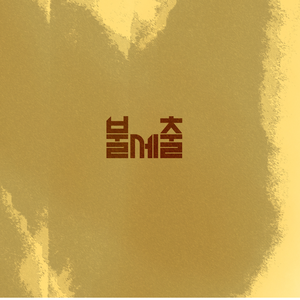
불세출 - 불세출01. 다스름 |
|
| 앨범명 | 불세출 |
| 아티스트 | 이준, 전우석, 김용하, 박제헌, 김진욱, 박계전, 배정찬, 최덕렬 |
| 레이블 | Bulsechul |
| 장르 | 국악 |
| 발매일 | 2016-12-16 |
| 앨범소개 | Bulsechul Ensemble
Bulsechul is a Korean musical ensemble of 7 Korean traditional instrument players and one guitarist. The ensemble was originally formed at a class of the Korean National University of Arts as an experimental group in 2006. In the following year, Bulsechul made its debut by winning the first place at ‘Flowing City’: the ‘21 Century Korean Music Project’ hosted by the Ministry of Culture, Sports and Tourism. Bulsechul has been much acclaimed for its outstanding music repertories; recreating traditional Korean music such as folk music, Sanjo (solo instrumental), Shinawi (ensemble impromptu) and shaman music as a contemporary music. Profound approach to improvisation has helped Bulsechul develop its unique style of music which contains sophisticated melody lines and modern musical structure. In addition, Bulsechul’s powerful but at the same time soft techniques of playing music have always overwhelmed the stage to the delight of Korean traditional music fans. Bulsechul has gained a wide recognition for its unique and matchless style within the world of Korean traditional music, and has been actively performing in overseas countries as well. Album ‘Bulsechul’ Play list 1. Daseureum The Korean word, “Daseureum,” means fine-tuning of musical instruments before a musical performance. Inspired by the concept of Daseureum, Bulsechul created this music with a mixture of various beats and tunes inherent in Korean traditional music. Improvisation by 8 solos intertwined with powerful ensemble give the audience the opportunity to witness Bulsechul members’ remarkable performance skills. 2. Bukcheong A variety of Talchum (Korean mask dance) has been passed down in different regions of Korea, and ‘Bukcheong Sajanoli (lion dance)’ is very popular in North Korea. Bulsechul was inspired by the musical accompaniment for ‘Sajanoli’ and composed ‘Bukcheong’. Bulsechul presents dances created to go with ‘Bukcheong’ for the performance at Macedonia for the first time. 3. Kite “Kite” was written as a background music for “Secret Police”, a play performed by Theatre Group, Dong(Korean meaning: “Act”). As its title shows, this music is intended to express a scene where children are flying kites. Strong push-and- pull sound unique to gayageum and geomungo met with dynamic guitar sound amplifies the tension of the kite fighting against the wind. 4. Moonlight Moonlight was also written as a background music for “Secret Police”, and recomposed as a chamber music later. As moonlight can be both romantic and lunatic at the same time, this music tries to express moonlight’s double character through improvisations by each instrument. With Moonlight, music audience can enjoy varied and colorful sounds of Korea’s traditional wind instruments such as piri, saenghwang, daegeum and sogeum. 5. Puneori Puneori is a Korea’s traditional beat music performed at Ghut (shaman ritual performance) in East Sea coastal area. Bulsecul’s Puneori transformed the beat Puneori into an instrumental music played by janggu, gayageum and ajaeng. On the top of janggu’s overlaying crescendo rhythm, gayageum joins as more of percussion than string instrument. And the oral sound part is played by ajaeng, of which the tune was inspired by late Pansori virtuoso, Kim So-Hee. This music delicately delivers plaintive mellow mood, which is unique to Korea’s traditional music. 6. Divine Song Various regions of Korea have different Ghut, shaman performance, which has been popular folk rituals. Ghut is a mixture of traditional art composed of colorful and technical music, dance and witticism. Ghut has usually been performed by a mudang (shaman) in the rural areas, or remade by traditional artists to be performed at theatres. ‘Divine Song’ constitutes a part of Ghut, and it is about wishing for the souls of the dead to get past several stages of hell safely and finally rest in peace. This ‘Divine Song’ was remade by Bulsechul in its own unique style Player Joon Lee / Gayageum(twelve-stringed zither) Wooseok Jeon / Geomungo(six-stringed zither) Yonhwa Kim / Haegeum(two-stringed fiddle) Jehun Park / Ajaeng(bowed zither) Jinwook Kim / Daegeum(transverse bamboo flute) Gyejeon Park / Piri(double reed bamboo oboe), Taepyongso, Saenghwang Jungchan Bae / Janggu(hour-glass drum), Vocal Deokyol Choi / Accoustic Guitar, Jing(gong) |
해외음원
















